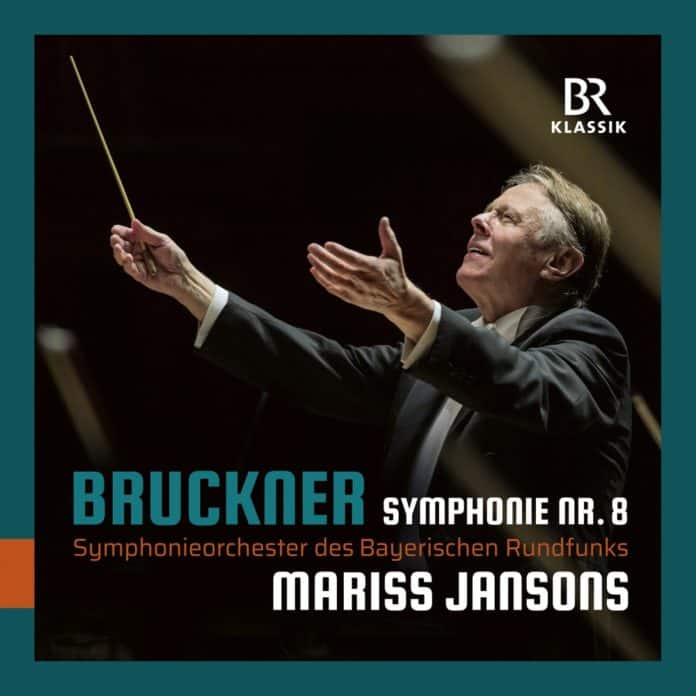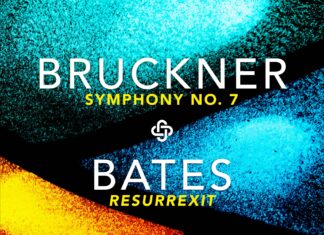“Bruckner’s Eighth Symphony is the zenith of symphonic writing.” — Sergiu Celibidache
Is this the best symphony ever written? Quite possibly: even if it is nearly impossible to pick just one greatest symphony, Bruckner’s 8th surely fits the bill. The expectations from Jansons have been high, judging by his almost ideal Mahler 5 with the same orchestra, not to mention other recent releases by the same forces: outstanding accounts of the Alpensinfonie (perhaps the most convincing digital performance after Karajan), a full-bodied Sibelius 2nd, a magnificent Mahler 2nd and Mahler 3rd (ranking among the best) to mention but a few.
When it comes to this new recording, the first thing one notices is the orchestral playing: there is no better way to describe the Bavarian music-making other than that of a world-class orchestra. The Bavarian Radio Symphony Orchestra is on par with the BPO (Wand) or the VPO (Karajan, Boulez) in their respective accounts of this work.
This is evident from the very beginning where Jansons plunges the listener into the dark matter that forms the rhythmic void of Bruckner’s universe. As with most Bruckner symphonies, in the 8th you are not really aware of its beginning. Soon you are left wondering: when does the music begin? Jansons makes sure you immerse yourself right into this vast unknown. The deep string sound, expressive winds, the spiralling rhythm—all feel part of a transition that is taking place before you knowing it. When the climax of the first movement is reached, the precision of the brass playing lets every detail unveil. Clear, distinctive playing also marks the Scherzo, with its mysterious orchestral sororities, and the curious inclusion of the harp, here vividly captured.
It is the great Adagio that might strike the listener as a curiosity on a first listen. At 24:50 it is one of the fastest on record. I was sceptical during my first listening attempt: while Wand, Karajan and Skrowaczewski reach for deep spiritual depths in their leisurely paced approaches, Jansons might come across as rushing through in the unfolding of the two themes. However, it was only after listening to the whole work that I realised that Janson’s tempi are such that fit his cohesive overall structural approach and how the Adagio relates to the other movements in this recording (indeed a slower undertaking would have been at odds with how he shapes the last movement). The bottom line: if the first time you don’t warm up to the faster pacing of the Adagio, give it another try after having listened to the whole symphony. Having said that, the high level of commitment from the orchestra is breathtaking: just listen to the first cymbal climax of at 19:16 and you will recognise the degree of involvement (rarely has the harp been audible throughout the percussion section at those moments). Or notice how Jansons contrasts the huge string blocks right after the second cymbal climax from 19:38 to 19:54, forcing them to persist against each other rather than let the tension dissolve. A different undertaking of the Adagio then, but soul-stirring nonetheless.
As for the finale, one could argue that Jansons and the Bavarian orchestra offer one of the best on record. The further development of the different themes, while sounding absolutely natural, is reminiscent of Jochum here and there with slight tempo variations (so minor that the untrained ear might not even notice them). Still, they are interesting to hear and perfectly fit Janson’s structural concept. When the recapitulation occurs, here announced impressively in all-fortissimo fashion, the layering of the different instruments is clear enough, while retaining both power and momentum. Of course, the real challenge—and for many, the highlight of the whole symphony—is the magical coda (one of Bruckner’s best, if not his best). Jansons treats the coda like the preceding Adagio. The pacing a bit faster than the classic Giulini, Karajan, and Wand accounts, thrusting like a spiral continuum until it reaches the blazing finale, where impressions of the different themes from the previous movements can be heard.
Listen on Spotify:
When all is said and done one thing is clear: Jansons’s account is not one that delves into the darkest side of this music and stays there. At the end, one realises that he has been shaping the symphony not by underlining its apocalyptic nature, but rather by touching on its humanistic side. Janson’s doesn’t wait until the finale to show us the vision of paradise. After the end, we are finally aware that glimpses of it have been present all along in the preceding movements.
As with all BR-Jansons releases the sound is full with a hint of reverb, and of demonstration quality, despite it being a live recording (my only complaint is that the applause hasn’t been omitted at the end). Climaxes are powerful enough, and I have to point out that the effect of the brass and timpani in the fff passages is not the sharp piercing sound of the Maazel/BPO or Karajan Bruckner recordings—instead it has a more blended presence similar to the Wand/BPO or Jochum/Dresden recordings which I think suits Bruckner’s music much better. Once more, I can’t stress enough how consistently remarkable the playing of the Bavarian Radio Symphony Orchestra is (specific mention should also go to the woodwind section). Or how Jansons grasps the visionary structure of this mammoth work. A lot of superlatives then, but justifiably so, for this belongs to the great Bruckner 8ths.
In fact, the remarkable release proves that once in a while great recordings of monumental works can be released from smaller labels (like BR-Klassik) that can stand beside monumental recordings like Wand’s, Karajan’s and Giulini’s. A great release and a uniquely humanistic vision of this work by Jansons.
Rating: ***** (Gold)
Anton Bruckner, Symphony 8
Symphonieorchester des Bayerischen Rundfunks
Mariss Jansons (conductor)
BR-Klassik
Other reviews (at the time of writing):
MusicWeb International
Music for Several Instruments







Good review of a great performance – I always love it when the applause is retained, that is absolutely correct, as it was in the concert hall. To end with silence is like nothing, and I’d like my elation reinforced.
Thanks for the comment. Before writing this review I asked some friends what they thought about the applause at the end. There was no clear consensus, some of them said they like it, it gives them this feeling of elation that you mention, others said they don’t see the point of having it on a CD recording. In fact, I did contact BR-Klassik to ask about the applause, because it is retained in many of their live recordings and it seems that indeed there are many people who prefer to have it there.
Nevertheless, applause or not, what a performance!
These “smaller” labels are often churning out more and better releases than the so-called majors…
True! And, I have to emphasize, in much better audio quality than many of the big labels.
[…] that he records the Bruckner 9 with one of the completed finales. Why Bruckner? Because I find his recording of the Bruckner 8th and that of the 9th, both with the Bavarian Radio Symphony Orchestra (again on the BR Klassik […]
[…] Reference recordings: Wand/BPO, Karajan/BPO, Karajan/VPO, Bohm/VPO, Boulez/VPO, Jansons/BRSO […]